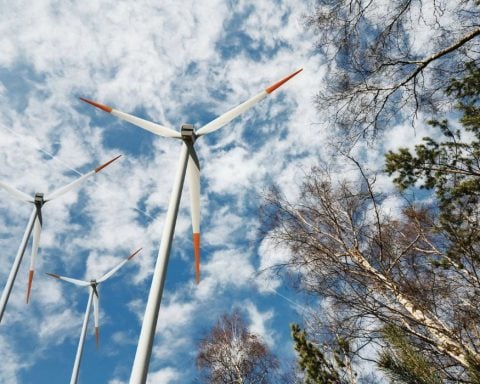The International Renewable Energy Agency (IRENA) drew a clear conclusion in its annual report on the cost of renewables in 2024: the business case for renewables is now stronger than ever.
IRENA’s research determined that 582 gigawatts of renewable power capacity were added to grids globally in 2024, representing an increase of nearly 20% from the previous year. Most of that growth happened in Asia, which accounted for 71% of the new capacity.
Ninety-one percent of large new renewable projects worldwide delivered cheaper electricity than the lowest-cost fossil fuel alternative. Onshore wind was the most affordable source of new power generation in all major markets, followed by solar. Wind was 53% cheaper and solar was 41% cheaper than fossil fuels. Solar and wind together now represent 46% of electricity generation globally.
“We’re no longer debating whether renewables make economic sense,” Scott Kelly, an economist and climate strategist, wrote in a LinkedIn post about the new report. “We’re debating whether our institutions and electricity networks are equipped to handle the deployment of such low-cost generation.”
Structural decoupling from fossil fuels
“After more than a decade of steep cost declines, solar and wind energy prices
have begun to stabilise – a natural sign of market maturity,” Francesco La Camera, IRENA’s director-general, observes in his introduction to the report. The cost of onshore wind stayed below the global average in China and Brazil, while China and India reported below-average levelized cost of energy for solar.
In Europe, solar surpassed coal for the first time in 2024, and clean sources overall were responsible for more than two-thirds of the total power that was generated. In the United States, solar and wind grew at an average compound rate of 12.3% per year between 2018 and 2023, while coal declined by 10.2% each year during the same period. “These trends point to a structural decoupling from fossil fuel–based power generation, enabled by supportive policies, falling technology costs and rising electrification,” the authors of the report observe.

The cost of battery storage, meanwhile, continues to fall rapidly and is approaching a 100% drop in price since 2010. The credit goes to manufacturing scale-up, better materials efficiency and improved production processes. Hybrid systems that combine wind and solar with battery storage are becoming the standard strategy in many places, because they offer greater output and reliability.
Digital technologies are also giving renewables a competitive edge. Things like predictive maintenance and AI-enabled asset management help increase operational efficiency and performance across a longer lifespan.
They’re not just cheaper
Price competitiveness isn’t the only advantage that renewables boast over fossil fuels. They also increase energy security by limiting dependence on international fuel markets. “Renewables are no longer the risky bet; fossil fuels are,” Kelly concludes.
The IRENA report also calculates avoided costs. The report estimates that displaced fossil fuel generation in the United States in 2024 amounted to US$24.1 billion in avoided fossil fuel costs and US$21.5 billion in avoided air pollution damages.

Mohammed Mostafa El-Khayat, executive chairman of the New and Renewable Energy Authority, also warns that IRENA’s figures on the lower cost of energy for renewables “can be misleading if not considered in the context of relevant natural resource availability – namely, solar irradiance and average wind speeds.”
Plenty of challenges to deployment
But it’s not all smooth sailing for renewables. Trade barriers, geopolitical strife and bottlenecks in the supply chain are all obstructing further cost reductions, La Camera notes. Access to financing also presents a barrier in the Global South in particular.
Africa made up “just 1.5% of global investment in renewables last year, despite accounting for 85% of the world’s population without access to electricity,” Bloomberg reports. Part of the problem is that investors demand much higher interest rates for new wind projects in Africa compared to Europe – 12% vs. 3.8% – though the cost per unit of electricity is about the same, because the capital expenditures are lower. Cheaper financing, therefore, could go a long way toward accelerating renewable expansion in Africa.
“The Global South must be empowered to generate its own electricity without adding to already unsustainable level of debts,” Bahamian climate scientist Adelle Thomas told the Associated Press.
RELATED
Why ‘all of the above’ energy policies won’t work
Banks reverse course and pour more money into fossil fuels
Is there a silver lining for climate under Donald Trump?
Permitting delays and infrastructure constraints have put the brakes on deployment, particularly in Europe and North America. Wind and solar may be cheaper, but they are slow to be integrated into grids. One reason for the friction, according to Osman Erkal, a portfolio manager for the U.K. responsible-investment firm Downing, is that “regulatory frameworks often treat each component (generation, storage) separately, resulting in complex permitting processes and misaligned market signals.”
Looking to the future, cost declines are expected to continue, albeit at a slower pace as markets continue to mature. The near term could actually bring price increases for green energy, the report warns, particularly from trade tariffs on renewable components.
Mark Mann is a journalist and editor for Corporate Knights. He is based in Montreal.
The Weekly Roundup
Get all our stories in one place, every Wednesday at noon EST.





